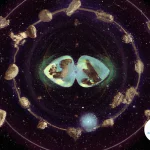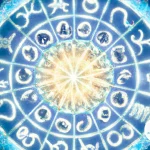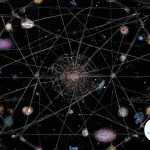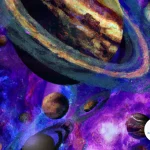Have you ever wondered why some love matches seem to be a match made in heaven, while others are a recipe for disaster? In the world of astrology, many people turn to their sun signs to determine compatibility. However, there is much more to love matches than just looking at your sun sign. In this article, we will explore the truth about love matches and delve into the various factors that influence compatibility beyond sun signs. From moon sign compatibility to planetary aspects and personal growth, we will uncover the hidden layers that can either strengthen or challenge a relationship. So, if you’re ready to go beyond the surface and discover the real secrets to finding a truly compatible partner, read on!
The Basics of Sun Signs

When it comes to astrology, the sun sign is the most well-known and easily recognizable aspect of a person’s birth chart. Based on the date of birth, the sun sign represents the zodiac sign that the sun was in at the time of your birth. It is believed to reflect your core personality traits and overall essence. The sun sign is often used as a starting point for determining compatibility in love matches. For example, two fire signs like Aries and Leo may be seen as a passionate and dynamic pair. However, it’s important to note that sun sign compatibility is just the tip of the iceberg. To truly understand the intricacies of a love match, it is necessary to explore other factors such as moon sign compatibility, rising sign compatibility, and even the influence of planetary aspects and houses. By taking a holistic approach to astrology, we can reveal a more nuanced understanding of compatibility beyond sun signs. To further explore the subject, check out our article on predicting love relationship patterns based on the birth chart.
Understanding Sun Sign Compatibility
Understanding Sun Sign Compatibility is an essential aspect of exploring astrological compatibility in relationships. Sun signs, representing the zodiac sign that the sun was in at the time of birth, are often the first point of reference when assessing compatibility. Each sun sign has its own specific qualities and characteristics, and it is believed that certain signs are more compatible with each other than others. For example, fire signs like Aries, Leo, and Sagittarius are known for their passion and energy, while earth signs like Taurus, Virgo, and Capricorn are considered grounded and practical. Air signs such as Gemini, Libra, and Aquarius are known for their intellect and communication skills, while water signs like Cancer, Scorpio, and Pisces are highly emotional and intuitive.
However, it’s important not to rely solely on sun signs when determining compatibility. While sun sign compatibility can provide some insight into a potential love match, it is not the be-all and end-all. To truly understand compatibility, it’s essential to explore other factors such as moon sign compatibility, rising sign compatibility, elements, modalities, planetary aspects, and synastry. These aspects give us a more comprehensive view of the individuals involved and how they interact with each other. By considering these factors, we can gain a deeper understanding of the dynamics and potential challenges within a relationship. For a more in-depth exploration of astrological compatibility, check out our article on Saturn, the God of Time in astrology.
The Limitations of Sun Sign Compatibility
While sun sign compatibility can provide some insights into a love match, it is important to recognize its limitations. Relying solely on sun signs to determine compatibility can oversimplify the complexities of a relationship. Each individual has a unique birth chart consisting of several astrological placements that contribute to their personality and compatibility. A person’s moon sign, rising sign, and other planetary placements play a significant role in shaping their emotional needs, communication style, and relationship dynamics. By only considering sun signs, we may overlook crucial aspects that could either enhance or challenge a relationship. Additionally, personal growth and life experiences also play a vital role in how compatible two people are. It’s important to remember that true compatibility goes beyond the surface level analysis of sun signs. To gain a deeper understanding of compatibility and maximize the potential for a fulfilling relationship, it is beneficial to consult a professional astrologer or explore other aspects of astrology, such as synastry and houses. To learn more about how sound therapy can bring energetic balance to your life and relationships, check out our article on sound therapy and astrology for energetic balance.
Factors That Influence Compatibility
When it comes to determining compatibility in relationships, there are several factors that go beyond just the sun sign. These factors shed light on the intricacies of a love match and provide a deeper understanding of the dynamics between individuals. Some of the key factors that influence compatibility include:
1. Moon Sign Compatibility: The moon sign represents emotions and how we nurture and connect with others on an emotional level. When the moon signs of two individuals align harmoniously, it can create a strong emotional bond in a relationship.
2. Rising Sign Compatibility: The rising sign, also known as the ascendant, represents how others perceive us and the image we project to the world. When the rising signs of two individuals are compatible, there is a natural understanding and attraction between them.
3. Elements and Modalities: Elements (fire, earth, air, water) and modalities (cardinal, fixed, mutable) play a significant role in compatibility. For instance, fire signs (Aries, Leo, Sagittarius) tend to blend well with other fire signs or air signs (Gemini, Libra, Aquarius) due to their shared energy and enthusiasm.
4. Planetary Aspects: The interactions between the planets in two individuals’ birth charts greatly influence compatibility. Harmonious aspects (such as conjunctions or trines) can create ease and understanding, while challenging aspects (such as squares or oppositions) may create tension or conflict.
5. Houses and Synastry: The placement of planets in specific houses of each individual’s birth chart can reveal areas of compatibility or potential conflicts in a relationship. For example, if one person’s Venus (the planet of love) falls in the other person’s fifth house (the house of romance and pleasure), it indicates a strong romantic connection.
6. Personal Growth and Compatibility: Although it may not be explicitly mentioned in birth charts, personal growth and compatibility are vital aspects of any long-lasting relationship. The ability of two individuals to support and encourage each other’s personal growth can greatly enhance compatibility and strengthen the bond.
By considering these factors in addition to sun sign compatibility, we can gain a more comprehensive understanding of the intricacies and dynamics within relationships. It’s important to remember that compatibility is a complex and multi-faceted concept, and no single factor can determine the success or failure of a relationship.
1. Moon Sign Compatibility
Moon sign compatibility plays a significant role in understanding the dynamics of a love match. The moon sign represents your emotional nature and innermost feelings. When two individuals have compatible moon signs, it often indicates that they share a similar emotional approach to life, which is crucial for building a strong and lasting connection. To determine moon sign compatibility, it is important to compare the elements of the moon signs. Water signs (Cancer, Scorpio, Pisces) tend to be highly compatible with other water signs, as they understand and connect with each other’s emotional depth. Earth signs (Taurus, Virgo, Capricorn) and water signs also have a natural affinity, with earth sign partners providing stability and practicality to the emotional nature of water signs. Fire signs (Aries, Leo, Sagittarius) and air signs (Gemini, Libra, Aquarius) can bring excitement and spontaneity to the relationship, but may need to work on finding a balance between their emotional needs. Ultimately, understanding moon sign compatibility helps to cultivate emotional harmony and deep connections in a relationship.
2. Rising Sign Compatibility
The rising sign, also known as the ascendant, is a crucial factor in understanding compatibility in astrology. While the sun sign reflects your core essence, the rising sign represents the persona you project to the world. It is determined by the sign that was rising on the eastern horizon at the moment of your birth. When it comes to love matches, rising sign compatibility plays a significant role in how two individuals interact and relate to each other. Your rising sign can influence your physical appearance, demeanor, and even your approach to relationships. For instance, if both partners have compatible rising signs, there is a natural ease and understanding in the way they present themselves to each other and the world. On the other hand, conflicting rising signs can lead to misunderstandings and challenges in communication. It is important to note that rising sign compatibility should be considered in conjunction with other factors, such as moon sign and planetary aspects, for a comprehensive understanding of a love match. So, if you’re looking to deepen your astrological compatibility analysis, don’t forget to explore the influence of rising signs for a more nuanced understanding of your relationship dynamics.
3. Elements and Modalities
In astrology, understanding the elements and modalities of each zodiac sign is crucial when it comes to compatibility. The elements refer to the four classical elements: fire, earth, air, and water. Each zodiac sign is associated with one of these elements, which shapes their fundamental nature. Fire signs (Aries, Leo, Sagittarius) are passionate and driven, while earth signs (Taurus, Virgo, Capricorn) are grounded and practical. Air signs (Gemini, Libra, Aquarius) are intellectual and communicative, while water signs (Cancer, Scorpio, Pisces) are intuitive and emotional. When it comes to love matches, harmony often arises between signs of the same element. These signs tend to understand each other’s needs and desires more easily.
Modalities, on the other hand, represent the three different ways in which the signs initiate and tackle tasks. Cardinal signs (Aries, Cancer, Libra, Capricorn) are initiators and leaders, and they thrive on taking charge. Fixed signs (Taurus, Leo, Scorpio, Aquarius) are stable and persistent, preferring to follow their own path. Mutable signs (Gemini, Virgo, Sagittarius, Pisces) are adaptable and flexible, going with the flow of life. In love matches, compatibility can often be found between signs that share the same modality. This similarity in approach allows for a smoother and more harmonious connection.
When elements and modalities align in a relationship, there is a natural synergy that can enhance compatibility. For example, a fire sign (fire element) and a cardinal sign (cardinal modality) may bring a sense of excitement and initiative to the relationship. A water sign (water element) and a mutable sign (mutable modality) may foster a deep emotional bond and adaptability to change. However, it’s important to remember that compatibility is not solely determined by elements and modalities. It’s just one piece of the puzzle that contributes to the overall dynamics of a love match. To explore other factors that influence compatibility, continue reading our article on predicting love relationship patterns based on the birth chart.
4. Planetary Aspects
Planetary aspects play a significant role in determining the compatibility between two individuals in a love match. These aspects refer to the angles formed between the planets in each person’s birth chart. Each aspect carries its own unique energy and can influence the dynamics of a relationship. For example, a harmonious aspect such as a trine or a sextile can indicate ease and compatibility, with the planets working together in a supportive manner. On the other hand, challenging aspects like squares or oppositions can create tension and friction between the individuals involved. These aspects can highlight areas of conflict and growth within the relationship.
To better understand the impact of planetary aspects on compatibility, astrologers analyze the specific planets involved and the houses they rule. For instance, the conjunction of Venus and Mars, the planets of love and passion, can signify a strong physical attraction between partners. Similarly, the aspect between an individual’s Moon and their partner’s Sun can indicate emotional compatibility and a deep understanding of one another’s needs.
It’s important to note that planetary aspects are not always definitive indicators of compatibility. They are simply tools that help astrologers gain insights into the dynamics of a relationship. A couple may have challenging aspects in their charts but still work through their differences and build a strong bond. Conversely, a couple with harmonious aspects may face obstacles that stem from other factors in their charts. It’s the overall combination of factors that determines the true compatibility between two individuals.
When exploring love matches, considering the planetary aspects can provide valuable insights into the dynamics and potential challenges within a relationship. These aspects highlight the unique energies and interactions between the planets in each person’s birth chart. By understanding the planetary aspects, astrologers can offer guidance on how to navigate and enhance compatibility in a love match. Remember, compatibility is a complex blend of various factors, and no single aspect should be viewed in isolation.
5. Houses and Synastry
In astrology, the houses and synastry play a significant role in understanding compatibility and the dynamics of a love match. The houses in a birth chart represent different areas of life, such as love, career, and family. When analyzing compatibility between two individuals, comparing the placement of planets in their respective houses can offer valuable insights. For example, if one person’s Venus, the planet of love and relationships, falls in the other person’s 7th house, which represents partnership, it suggests a strong potential for a harmonious and fulfilling romantic connection. Likewise, if one person’s Mars, the planet of passion and assertiveness, is in the other person’s 5th house, which governs love affairs and creativity, it indicates a mutual attraction and shared enthusiasm. Examining the aspects between the planets in each individual’s birth chart can reveal the nature of the energy exchange between them. For instance, a square aspect between one person’s sun and the other person’s moon may signify a challenging yet dynamic and transformative relationship. It is important to interpret the houses and synastry in a comprehensive manner and consider other astrological factors to gain a deeper understanding of compatibility. So, when exploring love matches, dive into the fascinating world of houses and synastry to gain a more profound insight into the dynamics and potential of a relationship.
6. Personal Growth and Compatibility
Personal growth plays a crucial role in any relationship, and it is a factor that must be considered when assessing compatibility. In the context of astrology, personal growth refers to the individual’s journey of self-awareness, self-improvement, and personal development. When two people come together in a romantic relationship, their compatibility is not only determined by their initial compatibility but also by their potential for growth and evolution as individuals and as a couple.
The journey of personal growth involves confronting and working through one’s own emotional baggage, insecurities, and patterns of behavior. It requires a willingness to grow, learn, and adapt. In a healthy relationship, both partners support and encourage each other’s personal growth, helping each other evolve into the best versions of themselves.
Astrology can provide valuable insights into an individual’s potential for personal growth. By analyzing the birth chart, an astrologer can identify areas where a person may encounter challenges or have the opportunity to thrive. Understanding each other’s astrological indicators for personal growth can deepen the understanding between partners and foster an environment of mutual support and encouragement.
Compatibility in terms of personal growth means aligning with a partner who shares similar values, goals, and commitment to self-improvement. It involves supporting each other’s individual aspirations and being willing to embark on a collective path of growth as a couple. This can involve engaging in activities such as therapy, workshops, or spiritual practices that promote personal development. It also requires open and honest communication, as well as a willingness to face challenges together.
Ultimately, personal growth and compatibility go hand in hand. When both partners are committed to their own personal growth and support each other in their individual journeys, it strengthens the bond between them. By continuously evolving and growing as individuals and as a couple, they can create a relationship that is not only compatible but also fulfilling and enriching. So, if you’re seeking a love match that goes beyond surface-level compatibility, don’t underestimate the importance of personal growth and the role it plays in cultivating a meaningful and lasting connection.
Exploring Love Matches
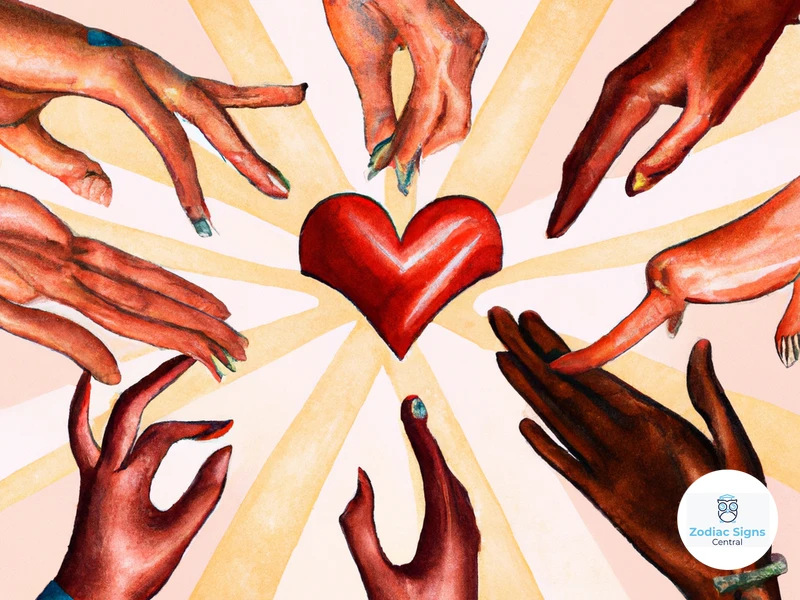
When it comes to exploring love matches, it’s essential to dive deeper into the various factors that contribute to compatibility. Beyond just sun signs, elements, modalities, moon signs, and planetary interactions all play a crucial role in understanding the dynamics of a relationship. Compatible elements such as fire and air or earth and water bring balance and harmony to a partnership. The modalities of cardinal, fixed, and mutable indicate how adaptable or stubborn each person is in the relationship. Complementary moon signs provide insight into emotional compatibility and how individuals express and nurture their emotions. Synastry, which examines the interactions between planetary placements in each person’s birth chart, sheds light on the strengths and challenges in a relationship. Additionally, analyzing house compatibilities reveals the areas of life where both partners align or clash. Ultimately, personal growth is a key component of any love match. As individuals evolve and work on themselves, the compatibility between two people can deepen and grow. Embracing the complexities of love matches beyond sun signs allows us to gain a more comprehensive understanding of the dynamics and potential of a relationship.
1. Compatible Elements
When it comes to compatibility in astrology, the elements play a significant role. The four elements – fire, earth, air, and water – each represent different qualities and energies that can either harmonize or clash with one another. Here is a breakdown of the compatible elements and their dynamics:
– Fire Signs (Aries, Leo, Sagittarius): Fire signs are passionate, energetic, and action-oriented. They have a natural compatibility with other fire signs because they understand and appreciate each other’s drive and enthusiasm. Fire also blends well with air, as it fuels and ignites the intellectual and communicative qualities of air signs.
– Earth Signs (Taurus, Virgo, Capricorn): Earth signs are grounded, practical, and focused on stability. They find compatibility with other earth signs as they share similar values and attitudes towards life. Earth signs also have a harmonious relationship with water signs, as their nurturing and emotional nature balance out the practicality of earth.
– Air Signs (Gemini, Libra, Aquarius): Air signs are intellectual, social, and quick-thinking. They find compatibility with other air signs due to their shared interests in ideas, communication, and socializing. Air signs also have a natural synergy with fire signs, as they stimulate and uplift each other’s energy.
– Water Signs (Cancer, Scorpio, Pisces): Water signs are emotionally sensitive, intuitive, and deeply empathetic. They have a natural affinity for other water signs, as they understand and connect on an emotional level. Water signs also find compatibility with earth signs, as their nurturing and supportive nature complements the stability and practicality of earth.
Understanding the compatibility of elements is just the starting point in exploring love matches. It is important to consider other factors such as moon sign compatibility, rising sign compatibility, planetary aspects, and houses to gain a comprehensive understanding of the dynamics between two individuals. By delving deeper into astrology, we can unlock a wealth of insight into the complexities of love and relationships.
2. Harmony in Modalities
Harmony in modalities refers to the compatibility between different zodiac signs based on their energetic qualities. In astrology, there are three modalities or modes: cardinal, fixed, and mutable. Each modality has its own unique characteristics and approaches to life. Cardinal signs are initiators, leaders, and action-oriented. They are known for their drive and ambition. Fixed signs are stable, persistent, and determined. They prefer consistency and are often reliable partners. Mutable signs are adaptable, flexible, and versatile. They are open to change and can easily adjust to different situations. When it comes to love matches, having compatibility between modalities can create a harmonious dynamic. For instance, a cardinal sign like Aries may find compatibility with a fixed sign like Taurus, as both signs have a strong sense of determination and focus. On the other hand, a mutable sign like Gemini may find compatibility with another mutable sign like Sagittarius, as both signs are open-minded and adaptable. It’s important to note that having different modalities in a relationship can also bring balance and complementarity. For example, a cardinal sign’s drive and ambition can be supported by a mutable sign’s adaptability and flexibility. By considering the harmony in modalities, we can gain a deeper understanding of the dynamics and compatibility between different zodiac signs.
3. Complementary Moon Signs
When it comes to understanding compatibility in love matches, the moon sign plays a crucial role. The moon sign represents our emotional nature, instincts, and innermost desires. It reveals how we nurture and express love, as well as our intuitive responses to others. In the context of love matches, having complementary moon signs can create a deep and harmonious connection between partners.
Complementary moon signs occur when two individuals have moon signs that are from the same element or are in compatible elements. For example, if one person has a moon in Aries and the other has a moon in Leo, both are fire signs and share a passionate and adventurous energy. This similarity in emotional temperament can foster a strong understanding and sense of shared values.
On the other hand, complementary moon signs can also occur when two individuals have moon signs that are in opposite elements. For instance, if one person has a moon in Cancer (a water sign) and the other has a moon in Capricorn (an earth sign), their emotional needs may differ but can balance each other out. The nurturing and sensitive nature of Cancer can complement the pragmatic and grounded nature of Capricorn, creating a harmonious and well-rounded partnership.
In a love match, complementary moon signs can bring a sense of emotional rapport, empathy, and understanding between partners. They can help navigate conflicts and support each other’s emotional growth. However, it’s important to note that compatibility is not solely determined by moon signs. Other factors, such as rising signs, planetary aspects, and personal growth, also contribute to the overall compatibility in a relationship.
For a more accurate assessment of love matches, considering the moon sign alongside other astrological factors is essential. By analyzing the interplay between different aspects of the birth chart, we can deepen our understanding of compatibility and embark on a journey of love that is truly aligned with our emotional needs and desires.
4. Synastry: Planetary Interactions
When it comes to understanding compatibility in relationships, exploring the concept of synastry is crucial. Synastry refers to the analysis of how the planets in two individuals’ birth charts interact with one another. By examining the planetary interactions in a love match, astrologers can gain deeper insights into the dynamics and potential challenges within the relationship.
Here are a few key ways in which planetary interactions influence compatibility:
1. Conjunction: A conjunction occurs when two planets are in close proximity to each other in the same sign or degree of the zodiac. This alignment creates a strong energetic connection between the individuals involved. Depending on the planets involved, a conjunction can signify compatibility and shared interests or indicate areas of tension and power struggles.
2. Opposition: An opposition arises when two planets are positioned directly across from each other in the birth charts. This aspect often represents a dynamic of polarity and tension within the relationship. It can symbolize a need for balance and growth, as well as potential conflict or power struggles that need to be resolved.
3. Trine: A trine occurs when two planets are approximately 120 degrees apart. This aspect indicates a harmonious flow of energy and a natural compatibility between the individuals. Trines symbolize ease and cooperation, suggesting that the individuals can support and understand each other effortlessly.
4. Square: A square aspect arises when two planets are approximately 90 degrees apart. This aspect represents a dynamic of challenge and tension within the relationship. Square aspects can signify areas of disagreement, conflict, and a need for growth and compromise.
5. Sextile: A sextile occurs when two planets are approximately 60 degrees apart. This aspect suggests opportunities for growth, understanding, and collaboration between the individuals. Sextiles denote a compatible and supportive energy that can enhance the relationship.
6. Other Planetary Aspects: In addition to the major aspects mentioned above, there are several minor aspects such as quincunx, semi-sextile, and sesquiquadrate that also play a role in determining compatibility. These aspects provide additional layers of insight into the dynamics between the individuals.
It’s important to remember that planetary interactions in synastry are complex and multifaceted. The specific combinations and placements of the planets in each individual’s birth chart contribute to the overall compatibility picture. By analyzing these planetary interactions, astrologers can provide a more nuanced understanding of the strengths, challenges, and growth opportunities within a love match. For further exploration, our article on Saturn as the god of time in astrology delves into another planetary influence that shapes relationships.
5. Synastry: House Compatibilities
When examining the compatibility between two individuals in astrology, analyzing the house compatibilities in synastry is crucial. Each person’s birth chart is divided into twelve houses, representing different areas of life. The position of planets and the cusp of each house in one person’s chart will interact with the planets and cusps in the other person’s chart, creating a unique dynamic between them.
To understand the compatibility of the houses, it is essential to look at the themes associated with each house. For instance, the first house represents the individual’s identity and physical appearance, while the seventh house symbolizes partnerships and relationships. When the planets in one person’s chart fall into the houses of the other person, it signifies a strong connection and potential compatibility in those areas of life.
To illustrate this, let’s consider an example: if the Moon in one person’s chart falls into the fourth house of home and family in the other person’s chart, there can be a deep emotional bond and a sense of belonging within the relationship. The fourth house person may provide a nurturing and secure environment that resonates with the emotional needs of the Moon person.
It’s important to note that harmonious house compatibility is not the sole determinant of a successful relationship. A variety of factors must be considered for a comprehensive understanding. Factors such as aspects between the planets, the overall balance of elements and modalities, and personal growth potential also significantly impact the compatibility between two individuals.
By examining the house compatibilities in synastry, astrologers gain valuable insights into the specific areas of life where individuals are likely to connect and align. This understanding allows individuals to work consciously on strengthening those areas and navigate potential challenges in other areas of life. So, when exploring love matches, don’t forget to delve into the fascinating realm of house compatibilities to uncover the hidden dynamics between two individuals.
6. The Journey of Personal Growth
The journey of personal growth is a crucial aspect of any relationship, and astrology can provide valuable insights into this process. While compatibility factors like sun signs, moon signs, and planetary aspects may form the foundation of a love match, personal growth plays a significant role in determining the long-term success of a relationship. As individuals evolve and mature, their needs, desires, and perspectives can change. Astrology helps us understand these changes by analyzing the transits and progressions in our birth charts. These movements of the planets signify different stages of personal growth and transformation. For example, the challenging aspects between certain planets may indicate periods of conflict and growth for individuals. Understanding these cycles and supporting each other’s personal growth can lead to deeper emotional connection and compatibility. Additionally, a couple can use astrology to identify areas of personal development that they can work on together, enhancing their bond and fostering a sense of shared growth. By acknowledging and embracing the journey of personal growth, love matches can flourish and withstand the tests of time.
Final Thoughts
In the realm of love and relationships, astrology offers a fascinating perspective on compatibility. While sun signs provide a general overview, it is important not to rely solely on them when determining a love match. The truth about love matches goes beyond surface-level characteristics and delves into the deeper aspects of astrology. Factors such as moon sign compatibility, rising sign compatibility, elements, modalities, planetary aspects, and houses all play a significant role in shaping the dynamics of a relationship. Personal growth is an integral part of compatibility, as individuals evolve over time and relationships must adapt and grow alongside them.
Understanding these nuances can lead to more fulfilling and harmonious connections. It allows us to navigate the complexities of love with a greater understanding and appreciation for the unique qualities and challenges that each partnership brings. By exploring the various elements that influence compatibility in astrology, we gain insights into the strengths, weaknesses, and potential growth areas of a relationship.
Ultimately, love matches are a dynamic interplay of multiple factors, and no two relationships are exactly alike. While astrology can provide guidance and insight, it is essential to remember that compatibility is not solely determined by the stars. It requires open communication, mutual respect, and effort from both partners to foster a deep and lasting connection.
So, as you embark on your own journey to find a compatible love match, remember to look beyond sun signs and embrace the complexity of astrology. By exploring the broader scope of compatibility, you can create a solid foundation for a relationship that grows and flourishes over time.
Frequently Asked Questions
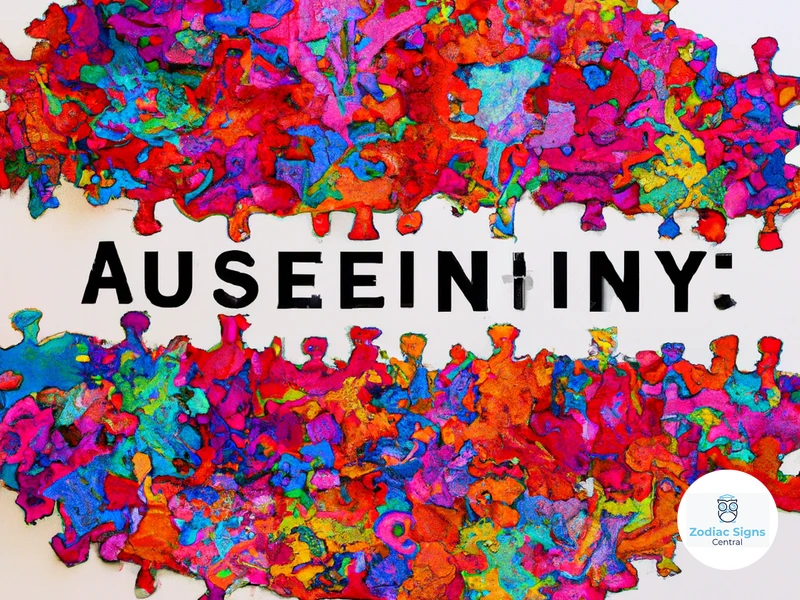
1. Can sun sign compatibility determine the success of a love match?
While sun sign compatibility can offer some insights into a relationship, it should not be the sole determining factor. There are many other important factors that influence compatibility.
2. What is moon sign compatibility?
Moon sign compatibility focuses on the emotional connection between two individuals. It looks at how well the moon signs of both partners align and interact.
3. How does rising sign compatibility contribute to a love match?
The rising sign, also known as the ascendant, represents how we present ourselves to the world. When two people have compatible rising signs, they may have an easier time understanding and connecting with each other.
4. What role do elements and modalities play in love matches?
The elements (fire, earth, air, and water) and modalities (cardinal, fixed, and mutable) provide insights into the dynamics and compatibility between two individuals. Different combinations of elements and modalities can either enhance or challenge a love match.
5. How do planetary aspects influence compatibility?
Planetary aspects refer to the angles formed between the planets in each person’s birth chart. Harmonious aspects can enhance compatibility, while challenging aspects may bring obstacles and tensions that need to be navigated.
6. What is the significance of houses in love matches?
In astrology, the houses represent different areas of life. When comparing birth charts for compatibility, examining the house placements can offer insights into how the relationship may unfold in specific areas such as love, communication, and shared values.
7. How does personal growth impact compatibility?
Personal growth is an ongoing journey for individuals. When both partners are committed to personal growth and support each other’s growth, it can contribute positively to their compatibility and the health of the relationship.
8. What are compatible elements in love matches?
Compatible elements in love matches refer to signs that share the same element. For example, fire signs (Aries, Leo, Sagittarius) are generally compatible with other fire signs due to their shared qualities of passion, enthusiasm, and energy.
9. What does harmony in modalities mean in a love match?
Harmony in modalities refers to signs that share the same modality, such as two cardinal signs, two fixed signs, or two mutable signs. Similar modalities often lead to a sense of understanding and compatibility in how individuals approach life and relationships.
10. How can complementary moon signs enhance a love match?
Complementary moon signs occur when the moon signs of two individuals balance and support each other. For example, a person with a moon in Cancer may provide emotional nurturing and stability to a partner with a moon in Taurus, creating a harmonious bond.
References
- Is zodiac based compatibility true?
- Why Astrology Compatibility Doesn’t Matter in Dating
- Why Astrologically ‘Incompatible’ Signs Stay Together the …
Frequently Asked Questions

1. Can I solely rely on Sun sign compatibility to find my perfect love match?
No, while Sun sign compatibility can provide some insight, it is not a comprehensive measure of compatibility. There are several other factors to consider.
2. What is Moon sign compatibility?
Moon sign compatibility refers to the compatibility between the zodiac signs of individuals based on the positions of their Moon signs in their birth charts.
3. How does rising sign compatibility affect relationships?
Rising sign compatibility is important as it determines the initial impression you make on others. It can influence how well you connect with someone on a deeper level.
4. What role do elements and modalities play in love matches?
The elements (fire, earth, air, and water) and modalities (cardinal, fixed, and mutable) of zodiac signs can indicate the natural energy and approach individuals bring to a relationship.
5. What are planetary aspects in astrology?
Planetary aspects refer to the angles that the planets make with each other in a birth chart. These aspects can reveal the potential challenges and compatibility between two individuals.
6. How do houses and synastry influence compatibility?
Houses in astrology represent different areas of life, and their interactions in synastry (the comparison of two birth charts) can shed light on shared experiences and compatibility in those areas.
7. What is the significance of personal growth in love matches?
Personal growth is essential in any relationship. It involves individual development and the ability of both partners to evolve together, supporting each other’s growth.
8. How do compatible elements contribute to relationship harmony?
Compatible elements share similar energy and values, making it easier for individuals with these elements to understand and support each other in a relationship.
9. What does harmony in modalities indicate in a love match?
Harmony in modalities suggests that partners have compatible approaches to life, leading to a balanced and harmonious relationship dynamic.
10. What is the significance of complementary Moon signs?
Complementary Moon signs can provide emotional support and understanding between partners, balancing out potential differences and enhancing the overall compatibility of the relationship.
References
- What Astrology Gets Wrong About Compatibility
- Zodiac Sign Compatibility: Your Astrology Love Matcher




